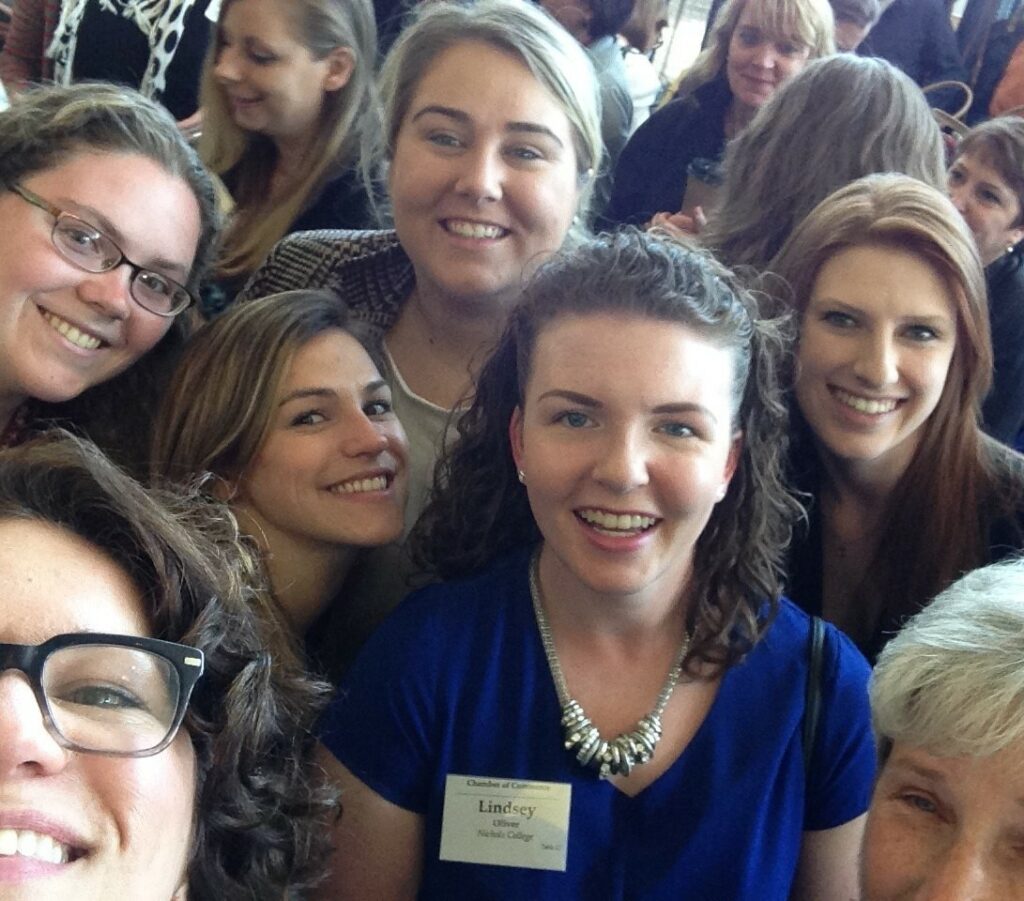Written by Isabella Portt ‘22
Women play a larger role in today’s society than ever before, yet continue to face a multitude of hardships on a day to day basis. These deprivations present themselves as unequal access to education, wage gaps, motherhood stereotypes/ burdens, and sexual misconduct. This can be seen across all countries and cultures where women’s roles will differ greatly, yet many are only compensated with some of life’s most trivial things. Regardless of wealth or impoverishment, this gender adversity is persistent with a broad victimization.
Equality through enrollment and educational opportunity for women is at an all time high on the global platform. However, that singular and impressive statistic is elusive to the multitude of problems that women continue to face in education systems. This is a global issue, presenting itself in countries from America to Africa. Third world countries show extreme statistics discouraging of female enrollment, and are therefore consistently under scrutiny of analyzations and research studies. studies in American institutions show undermining of females as young students. These opportunity gaps were studied by Joseph Cimpian and associate Sarah Lubienski from 1998-2011. The study was sparked by a gap of 0.25 standard deviations between boys and girls in third grade math scores, with the boys in the lead.
It was theorized by the researchers that this imbalance was on behalf of the teacher and social standards. When comparing a boy and girl of the same socio-economic status and math performance, teachers would rate the boy with higher mathematic capabilities. This occurred at no coincidence, and showed itself in a repetitive pattern throughout the decade of the study. Educators show a tendency of favoring a male’s innate ability rather than a female’s. While interviewing elementary school teachers, one claimed there was no gender differences in scores, even claiming “See, the girls can do just as well as the boys if they work hard enough.” This was a pivotal turn in the study, exposing the clear favor for males in education (Cimpian, 2018). This is not only of immediate impact to young girls enrolled in school, but sets an unfortunate tone for a woman’s academic ability to be disfavored throughout her educational endeavors. This has a domino effect, spilling into post secondary studies and the workplace.
Despite women creating half of the workforce, salary expenditures on women versus men is nowhere near an even split. On average for 2018, for every $1.00 a man makes, a woman makes $0.81. Women see the most suffrage through accounting for two thirds of the minimum wage working population. In middle-skill occupations that are female dominated, a woman will earn 66 percent of what a male dominated position in the same field would make. Over the course of the past fifteen years in the United States, women made 49 percent as a whole of what men made.
The Institute for Women’s Policy Research tracks and monitors the gender wage gap on a biannual basis, and creates a statistically based prediction for future wage gaps. The IWPR estimates that, at this rate of closing wage gap, it will take until the year 2059 for women to seek parity in pay. However, this year of equality is even further away for women of color. It is estimated that black women, who make $0.63 to the $1.00 a man makes, will see pay parity in 2130. Almost a hundred years later, in 2224, hispanic women that are making $0.54 to the man’s dollar will seek equality in pay (IWPR, 2019). 80 percent of black women are the leading income for their households, therefore these scarce wages are making ends meet for more people than just the female employee.
If the salary of black women were raised to be uniform with the white male’s salary, the average woman would then be able to afford 2.5 years of child care, three years’ worth of groceries, 22 months of rent or full cost tuition at a two year college program. Those are four of many ways the theoretical $21,698 in wage gap could be spent for the betterment of a woman and her family. Closing of wage gaps proves to benefit society as a whole; federal statistics show that equal pay would eliminate poverty for half of working women and provide $513 billion for the economy (LeadersUp, 2019). Discrimination through female wages is a tedious and everlasting problem in society, with statistics showing a glaring amount of years until it becomes solved.
Motherhood holds one of the largest gaps in society, which is the reality of motherhood in contrast to the societal expectation for such role. Some employers expect women to return to work a mere 6-12 weeks post child delivery. Often, people expect mothers to drop the excess baby weight quickly by maintaining a healthy lifestyle with good habits, all the while inflicting those same habits on their children. Repetitively, it is stressed for women to ‘date their spouse’ and host a healthy marriage on top of motherhood in order to set a good example. All of these expectations for ‘ideal motherhood’ come with a backlash for women, where young mothers are placed under a social microscope. They are scrutinized for maintaining a busy lifestyle, ‘neglecting’ their infants and/or seeing relationship trouble simultaneously.
The raw reality is that there are 11,322,000 single parent families in the United States, 81.5% of which are headed by single mothers. 34% of those single mothers that face poverty and food insecurity, let alone the 26.8% that are unemployed. 22.4% of the unemployed mothers receive benefits, leaving 4.4% of single mothers with zero income. If making ends meet isn’t enough of a full time job, society is there to further frown upon the appalling statistics. In 2017, the median income for an American married couple was $90,380, yet for single mothers it was $41,700.
Working longer hours or getting a second job to create a higher income is what one many suggest to a single mother. Hire a babysitter or seek daycare for a child, these are some solutions that seem simple enough. The underlying truth is that child care is extremely unaffordable, especially for those who need it most. For example, in Massachusetts, a single mother with the median income of $41,700 would spend half of her income on child care alone (Single Mother Guide, 2019). This is a counterproductive form of spending, as she can not earn back the money spent on daycare during that time frame. Society sculpts a harsh cycle of expectations and lack of social assistance for the staggering population of single mothers that struggle for a lifetime.
Sexual misconduct is a type of harassment that unfortunately many women face in the workplace, school environment, while carrying out leisure activities, and sometimes even at home. It consists of unwanted sexual advances and/or conduct [whether verbal or physical] that poses a threat to one’s rights and their consent. This occurs frequently on a daily basis, with some workplaces being of higher risk factor than others. For example, working for tips is a job of high risk factor for women, where they often work through harassment in order to earn a majority of their income from the customer. These women under the ‘accommodation and food services’ category of a career account for 14 percent of all charges made to the U.S. Equal Employment Opportunities Commission (IWRP, 2019). The EEOC will officially label it as workplace harassment “when this conduct explicitly or implicitly affects an individual’s employment, unreasonably interferes with an individual’s work performance, or creates an intimidating, hostile, or offensive work environment” (U.S. EEOC, 2018). However, this does not assist women who face sexual misconduct beyond the workplace.
Every minute and a half, someone in the United States will be subject to sexual violence. Even more shockingly, 995 of every 1000 sexual violence perpetrators will walk free, leaving only 0.5% of offenders actually convicted (RAINN, 2019). A large portion of unreported acts can be attributed to women being subject to sexual violence from someone they know. Many women will return home to face these struggles, as one in three women experience physical or sexual violence from an intimate partner. Furthermore, one in every two murders of a woman will be committed by a partner or a family member.
It’s known but not acted upon for change that women are victimized in the workplace, and limitedly known while hardly acted upon that they are subject to the misconduct by their own partners. Women fall victim to a variety of misfortunes that society inflicts upon them, regarding wages, opportunity and stereotype. This variety of problems is highly consistent in modern day, yet absconding of any remote solution.
Works Cited
Cimpian, J. (2018, April 23). How our education system undermines gender equity. Retrieved from https://www.brookings.edu/blog/brown-center-chalkboard/2018/04/23/how-our-educationsystem-undermines-gender-equity.
EEOC Home Page. (n.d.). Retrieved from https://www.eeoc.gov/. Equal Pay: What Does it Mean for Women of Color? (2019, June 12). Retrieved from https://leadersup.org/equal-pay-day-women-color/.
Explore the facts: Violence against women. (n.d.). Retrieved from https://interactive.unwomen.org/multimedia/infographic/violenceagainstwomen/en/index.h tml#intimate-3.
Holtzman, T., & Hegewisch, A. (2019, June 1). The Gender Wage Gap: 2018; Earnings Differences by Gender, Race, and Ethnicity. Retrieved from https://iwpr.org/publications/annual-gender-wage-gap-2018/.
Holtzman, T., & Hegewisch, A. (2019, June 1). Sexual Harassment and Assault at Work: Understanding the Costs. Retrieved from https://iwpr.org/publications/sexual-harassment-work-cost/.
Single Mother Statistics. (2019, June 14). Retrieved from https://singlemotherguide.com/single-mother-statistics/.
Violence Against Women. (n.d.). Retrieved from https://www.who.int/news-room/fact-sheets/detail/violence-against-women.

